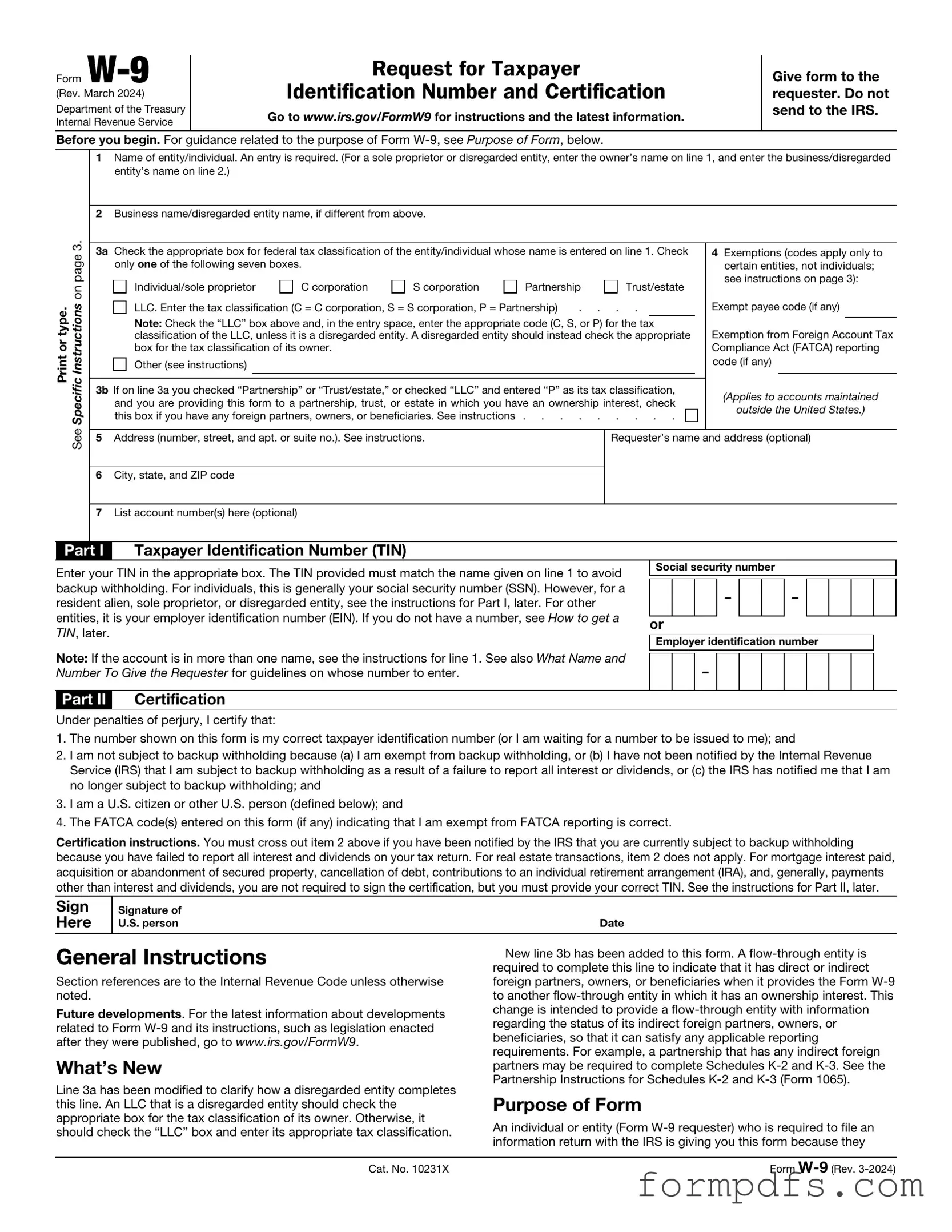What is the IRS W-9 form?
The IRS W-9 form is a document used in the United States by individuals and businesses to provide their taxpayer identification information. This includes your name, address, and Social Security Number (SSN) or Employer Identification Number (EIN). The form is typically requested by a business or individual who needs to report payments made to you to the IRS.
Who needs to fill out a W-9 form?
Any individual or entity that receives income from a business, such as freelancers, independent contractors, or vendors, may be required to complete a W-9 form. If you are providing services or goods and expect to be paid, the requesting party will likely ask for this form to ensure they can accurately report the payments to the IRS.
When should I submit a W-9 form?
You should submit a W-9 form when a business or individual requests it, typically before they issue payment for your services. It’s best to provide this form promptly to avoid any delays in payment processing.
How do I fill out a W-9 form?
Filling out a W-9 form is straightforward. You will need to enter your name, business name (if applicable), address, and taxpayer identification number. If you are an individual, this is usually your SSN. If you are a business entity, you will provide your EIN. Finally, sign and date the form to certify that the information is accurate.
Is the W-9 form submitted to the IRS?
No, the W-9 form is not submitted directly to the IRS. Instead, it is provided to the requester (the business or individual paying you). They will use the information from your W-9 to complete their own tax forms, such as the 1099-MISC or 1099-NEC, which they will submit to the IRS.
What happens if I don't submit a W-9 form?
If you do not submit a W-9 form when requested, the business or individual may withhold taxes from your payments. This is known as backup withholding. The withholding rate is currently set at 24%, which can significantly reduce your earnings until you provide the necessary information.
Can I refuse to fill out a W-9 form?
You can refuse to fill out a W-9 form, but doing so may impact your ability to receive payment. Businesses require this form to comply with IRS regulations, and without it, they may choose not to engage your services or may withhold taxes from your payments.
How often do I need to submit a W-9 form?
You typically only need to submit a W-9 form once per requester, unless your information changes. If you change your name, address, or taxpayer identification number, you should submit a new W-9 form to ensure that the information on file is current.
What should I do if I make a mistake on my W-9 form?
If you make a mistake on your W-9 form, it’s important to correct it as soon as possible. You can fill out a new W-9 form with the correct information and submit it to the requester. It’s a good practice to inform them of the change to avoid any confusion.
Where can I find the W-9 form?
The W-9 form can be found on the IRS website. It is available for download in PDF format. You can also request a copy from the person or business asking you to complete it, as they may have their own version to provide.
